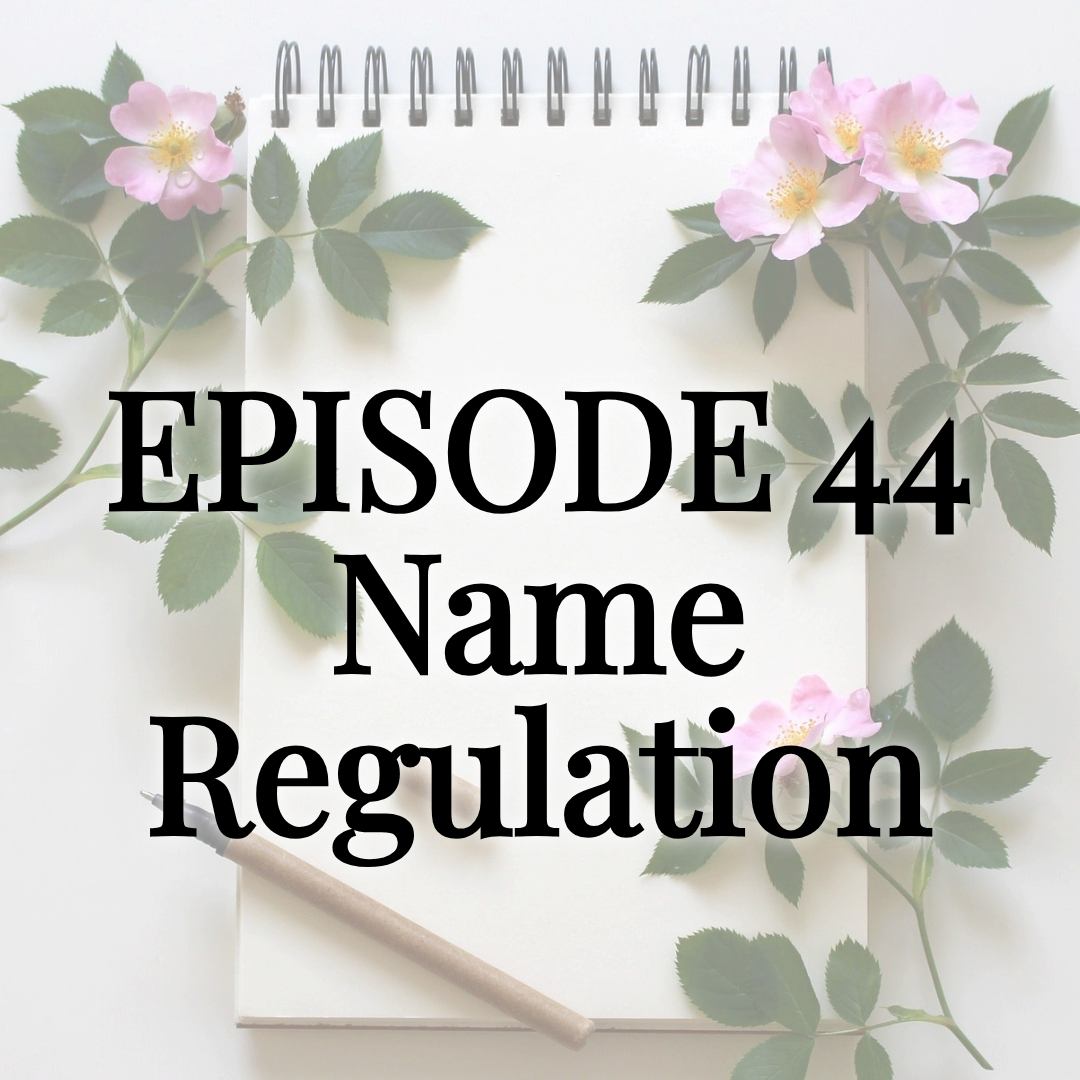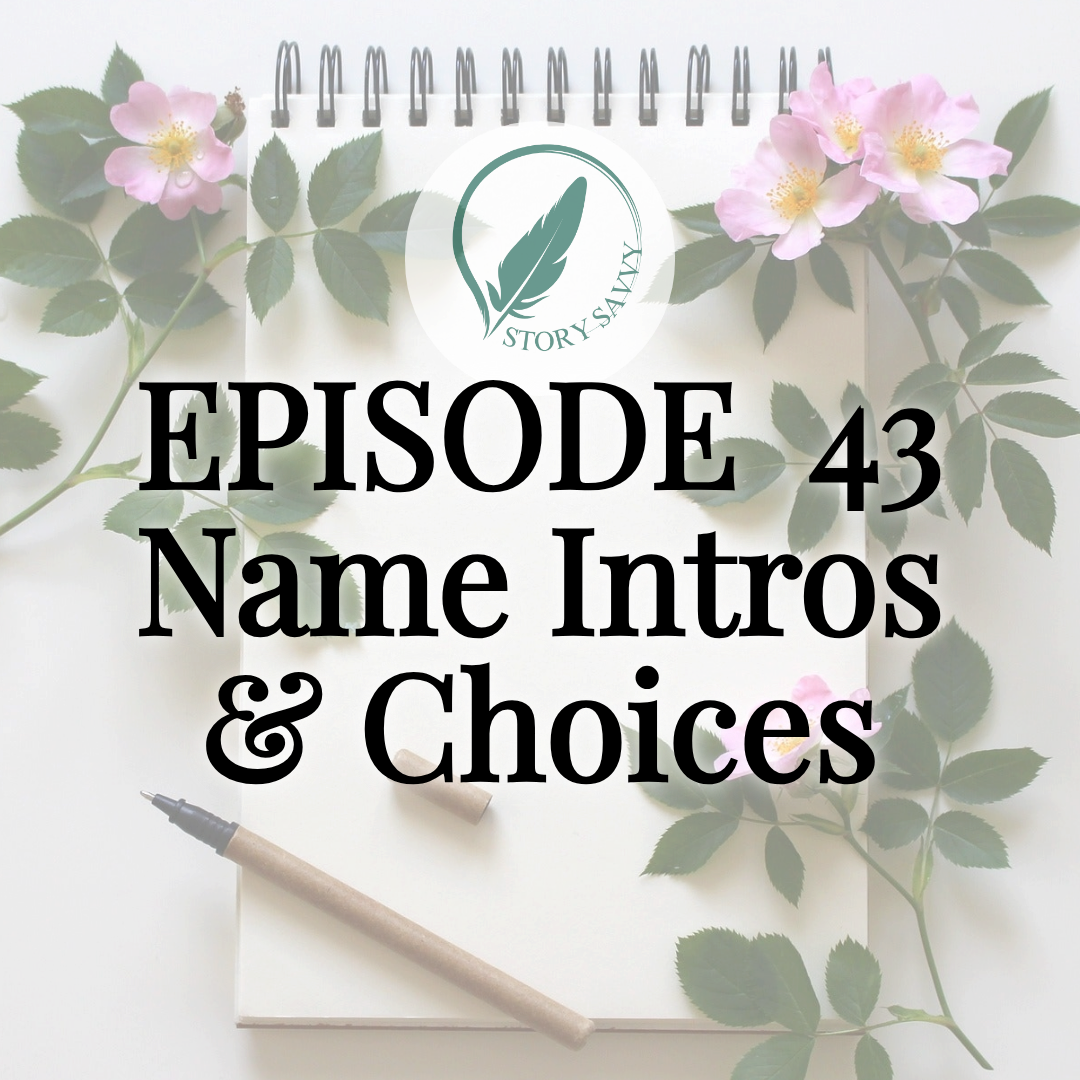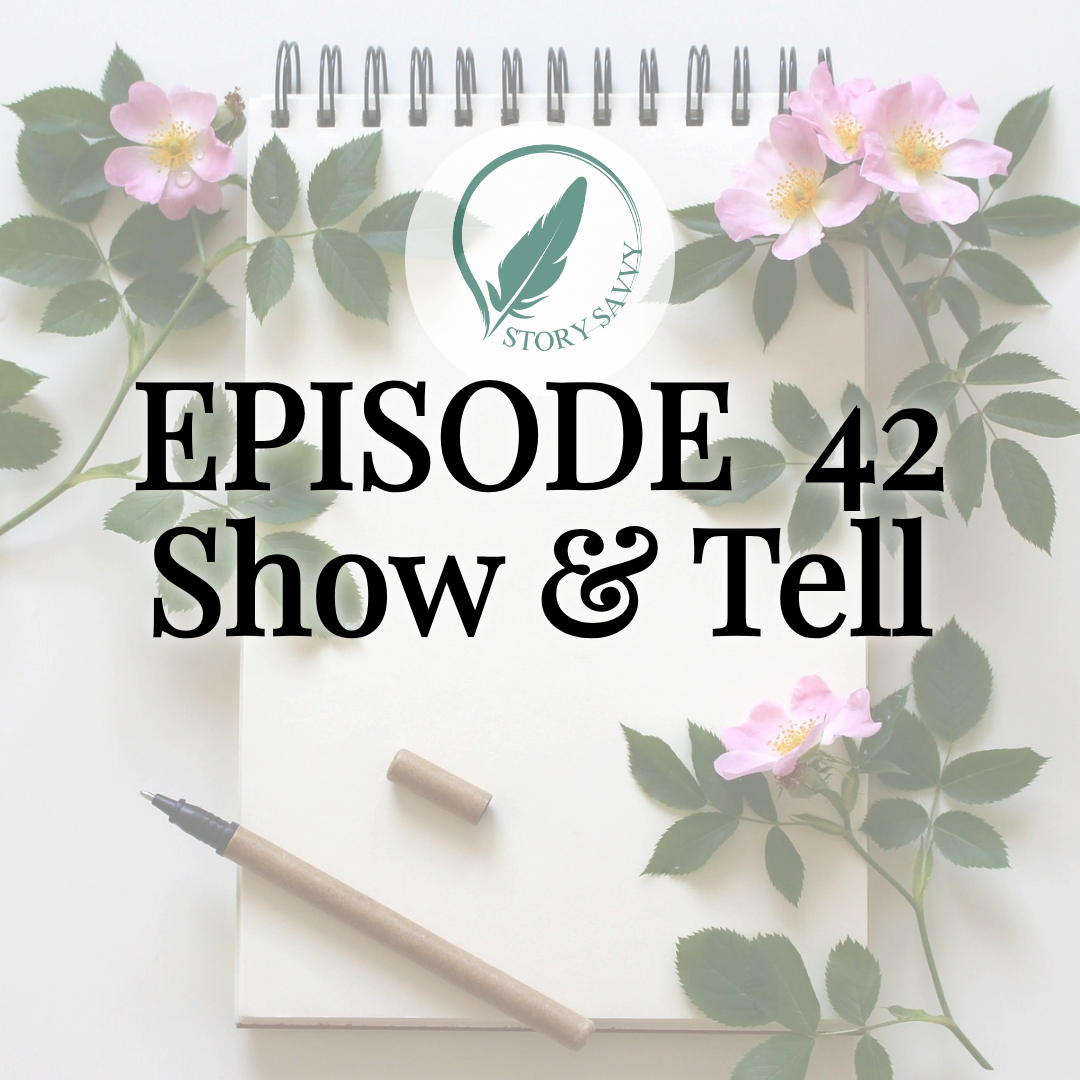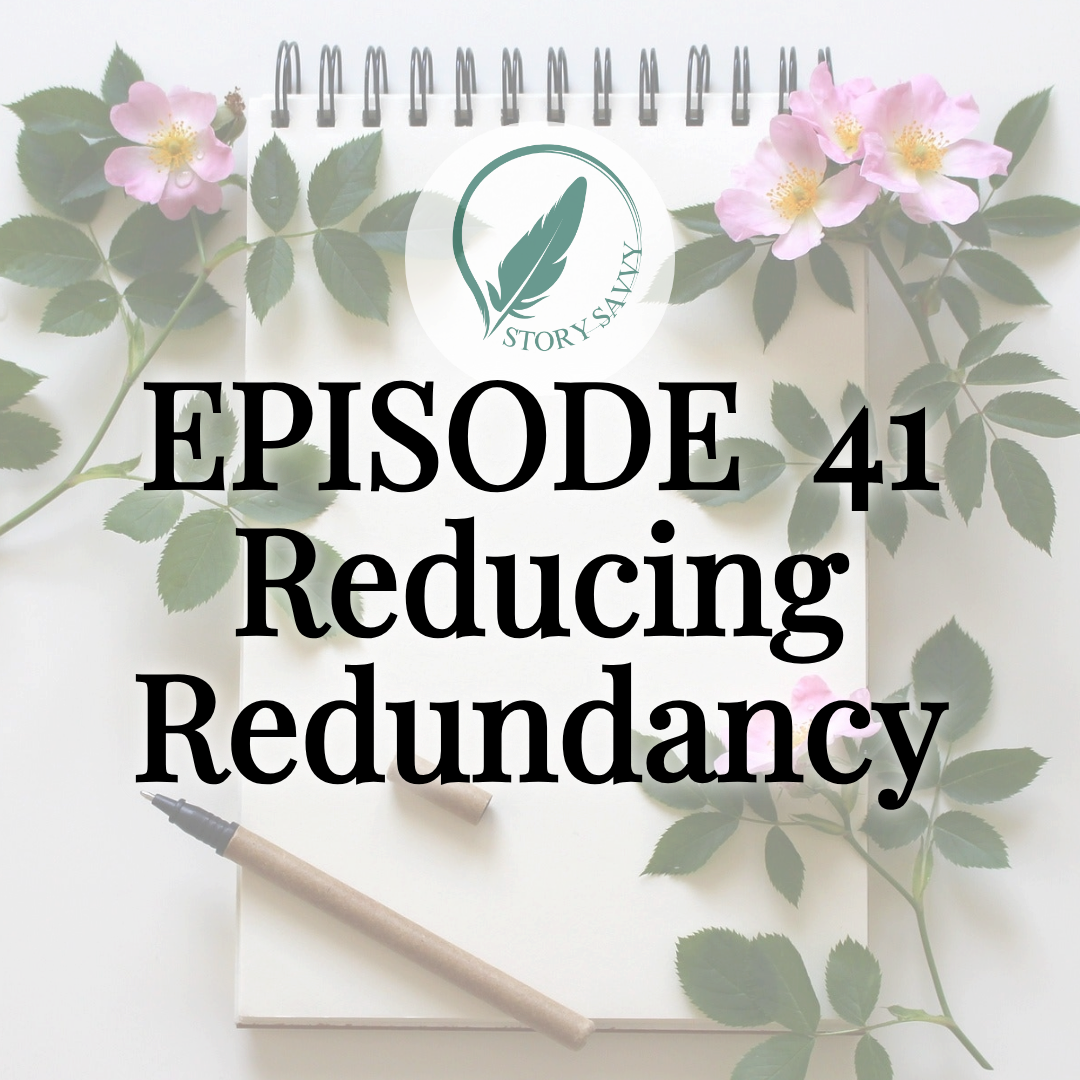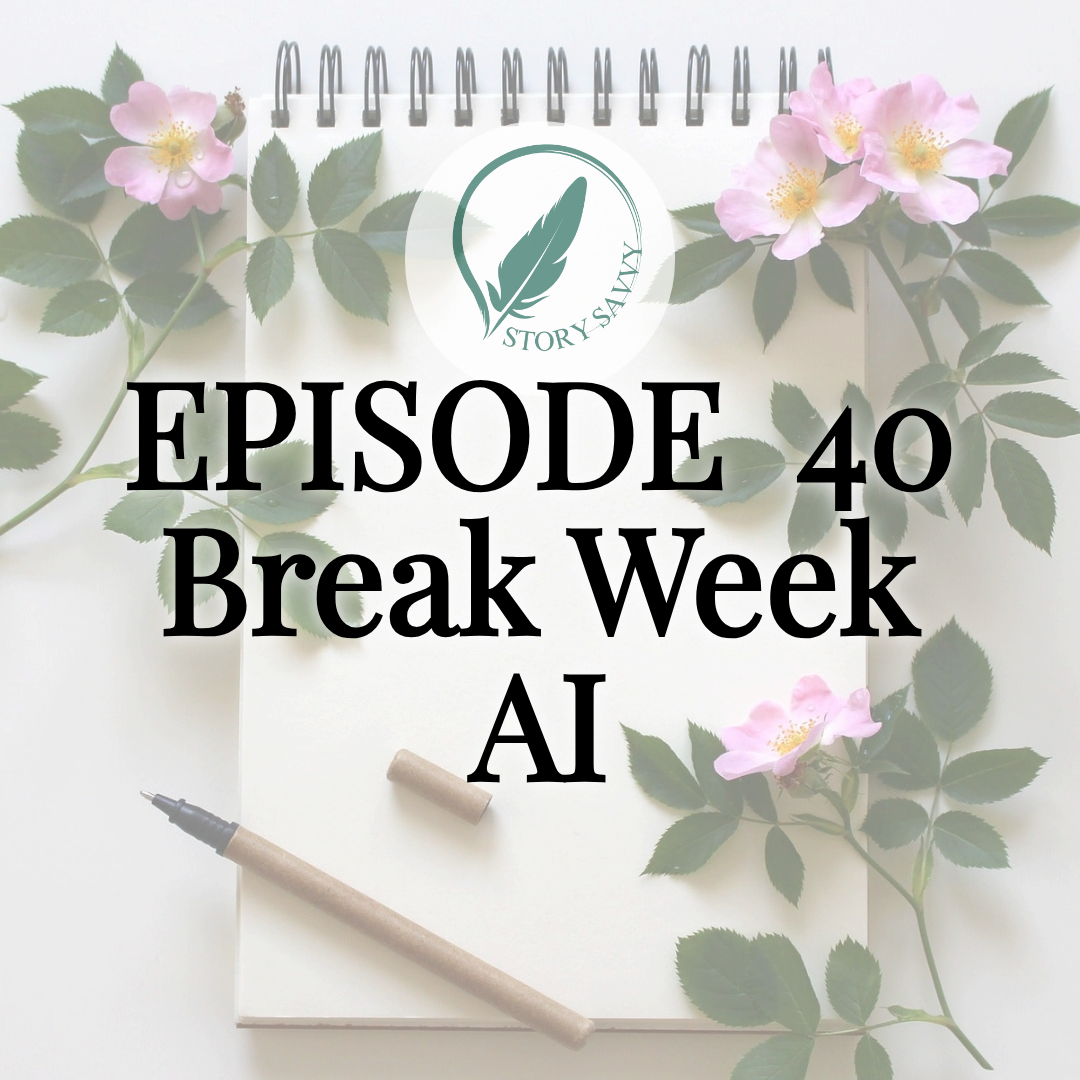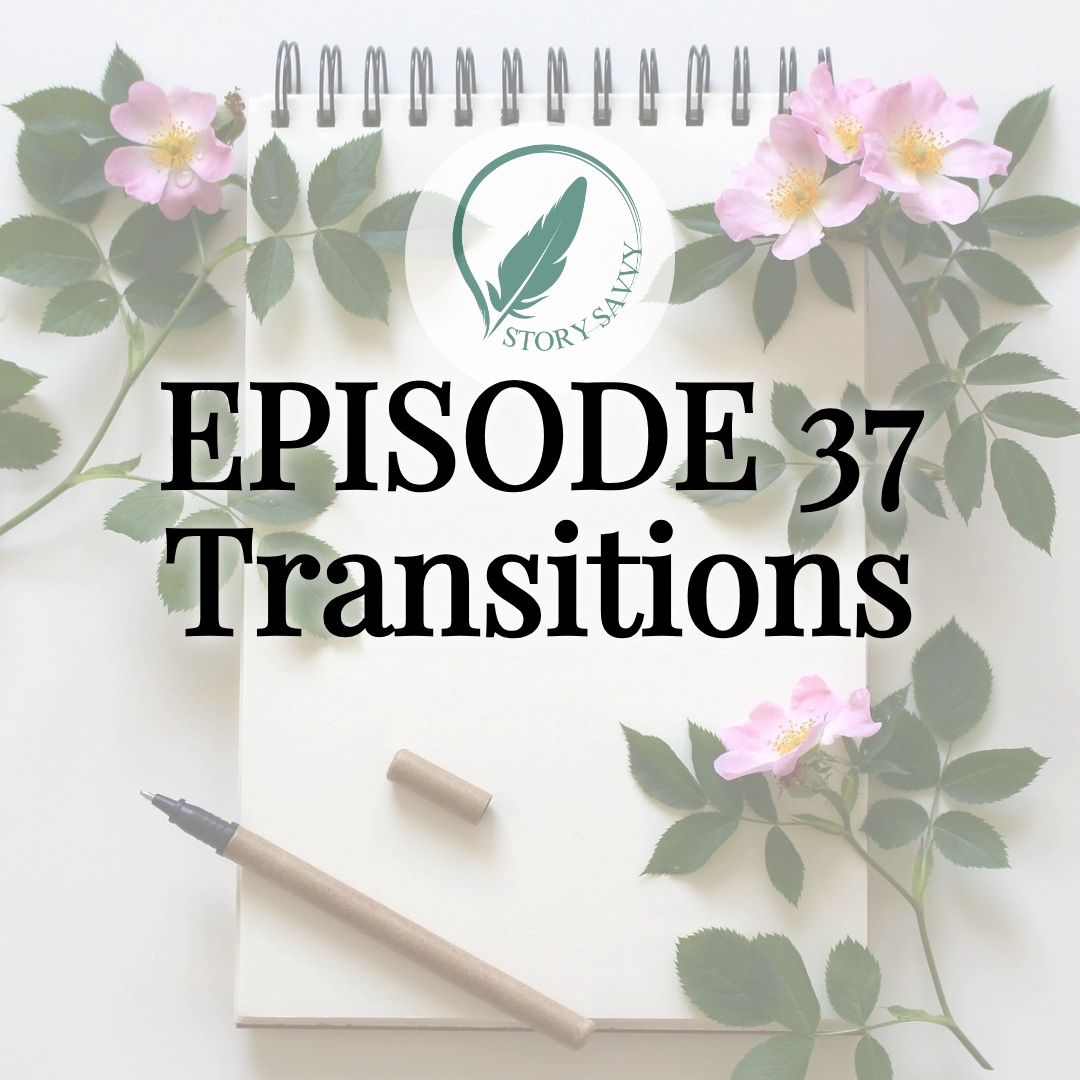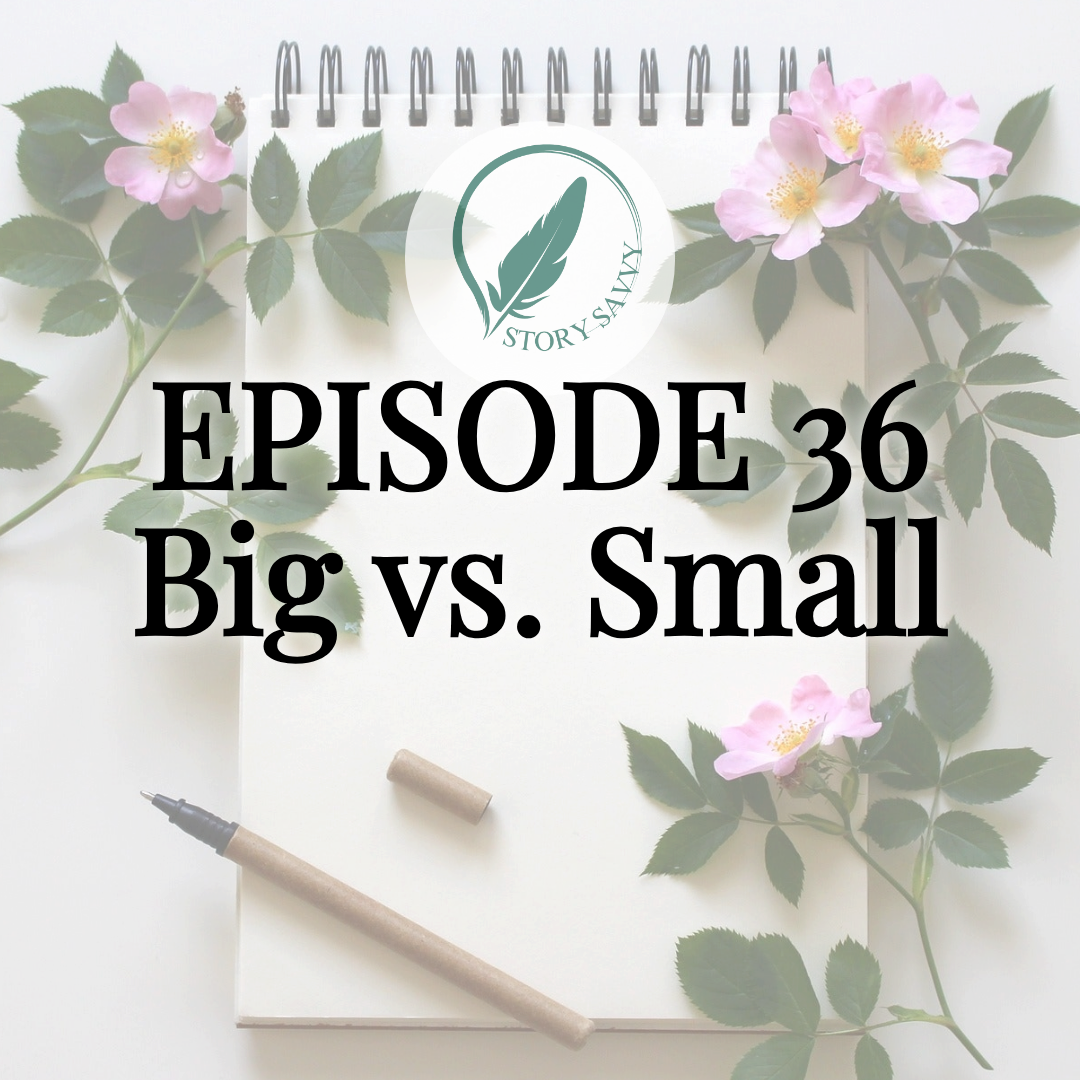Nailing Your Stakes: Story Savvy Self-Editing Episode 17
My sincere thanks to Christy Nicholas for guest-hosting!
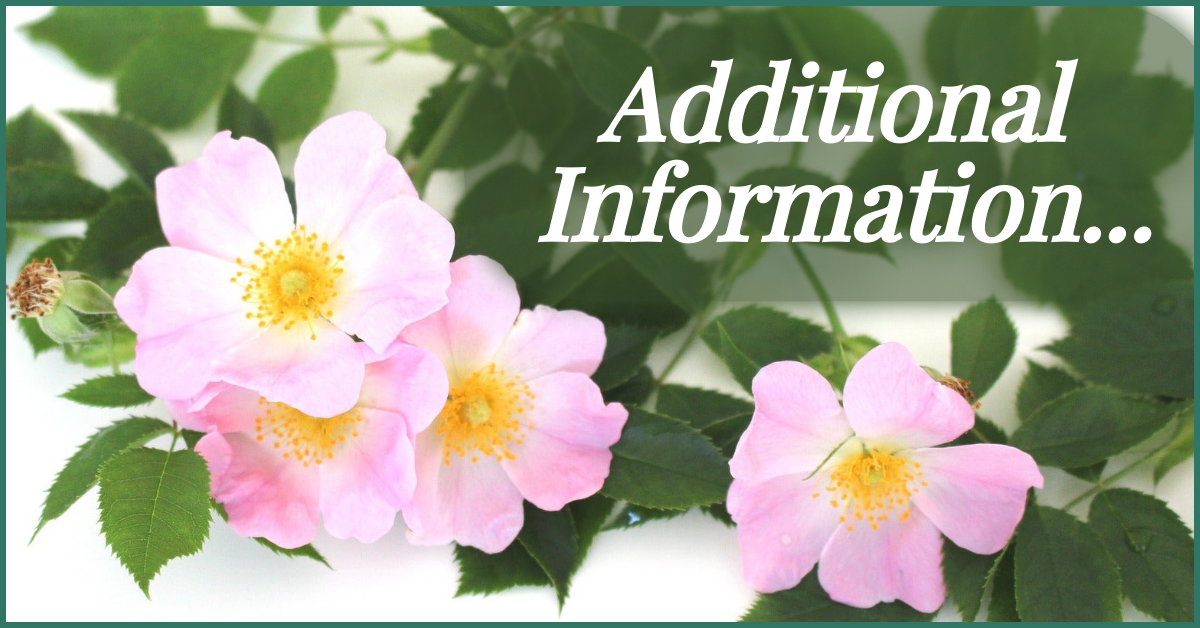
Additional thoughts:
You can find the links to Christy's books in the show notes below! I really appreciate her stepping in on short notice to cover for my usual co-host, Agnes Wolfe.
Episode 17 Overview:
Nailing Your Stakes
"Do both the protagonist and reader have a clear understanding of what's at stake for global success? Or, more importantly, failure? Are those stakes doing their job?"
Today, Rebecca teaches you what every writer should know about deciding, defining, and delivering great stakes for your novel as we explore how to improve your story strength in this latest episode of the 52-Week Story Savvy self-editing series.
Rebecca Hartwell, founder of Hart Bound Editing is joined by published author Christy Nicholas to dig into knowing what stakes are expected in your genre, how to change stakes over the course of the story well, and brainstorming tons of stakes you could possibly use.
In This Episode:
- Is it better to decide your stakes & edit them in, or use what you already have in place?
- What are some other ways to look at life-and-death stakes?
- How can you check that the stakes you are using are strong enough?
- Do you need to show the level of stakes you’re using happening to the protagonist?
- If the stakes don’t feel grounded, how can you fix that?
- Can the stakes jump way up, or way down? How can that be done well?
- By what point in the story do the stakes need to be clear?
Recommended Resources:
- Christy Nicholas’s Books – [https://greendragonartist.com/]
- Authors’ Alcove Membership Site – [http://authorsalcove.com]
- Christy Nicholas on Social Media – [https://greendragonartist.com/about/contact/]
- Book Giveaway – [http://authorsalcove.org]
See you next week for episode 18: Using Appropriate Intensity!
Episode 17 Transcript:
Nailing Your Stakes
Rebecca Hartwell:
Hello and welcome to the Hart Bound Editing Podcast. This is episode 17 of the weekly Story Savvy series, where we tackle the 52 biggest self-editing topics and tips to help you make your good story great as a published author, this time, asks me, a developmental editor, all questions that you've wanted to. My usual co-host and I—that's Agnes Wolf—have covered a bunch of different topics in this series so far, and last week our first guest co-host, Isla, and I went over the topic of checking that you have a strong protagonist goal to help keep your story momentum moving forward.
Today my temporary new co-host and I are going to take a look at story stakes and using them effectively. By the end of this episode, you will hopefully feel confident identifying whether you have strong, appropriate stakes in your story and that they are working to keep things interesting and meaningful.
Joining me to ask all of the questions is Christie Nicholas, my friend and published romantic fantasy author of 26 books, including the Druid's Brooch series. Christy, why don't you tell us all a little bit about you and your books before we dive in with the first question?
Christy Nicholas: Thank you. I am Christy Nicholas, an author with genre ADHD. So, I do write in historical fantasy, but also urban fantasy and paranormal cozy mystery, all set in the home of my heart, my beloved Ireland. And I'm excited to be here today to tackle this fascinating aspect of meeting genre expectations in keeping the reader invested in our stories.
So, let's start by defining stakes. What do you say are the stakes of the story? What sort of things are we looking at in this topic?
Rebecca: There are a few ways of looking at this. The stakes can be the goal that's being chased, as I talked about in the last episode, or it can be a motive that's being run away from. But it doesn't have to be. It can be separate from both of those things.
So, I would typically define it as: stakes are things that can be won or lost. They are things that make a life better or worse to experience. They are things that can be like objects that can be gained or lost.
And looking at Maslow's Hierarchy of Needs can be very helpful in looking at stakes. If you're writing a genre that's dealing with basic survival, you want to look at that lowest level of that pyramid, and the stakes are often going to be food, shelter, water, sleep, those kind of baseline things. But different stories are going to be dealing with self-expression and the higher levels of that pyramid. So, if you're ever entirely stuck on what stakes you even want to start thinking about, looking at Maslow's Hierarchy of Needs can be helpful.
The last point that I want to make here is in order for the stakes to work well in the story, the protagonist must have some ability to affect those stakes, but it also must be somewhat out of their control. You want it to always be in that middle ground. So, the protagonist's choices must have the ability to move them up or down in their stakes. Their actions have to be able to have that effect, but it has to be harder to do so than simply deciding, “all right, I'm happy now.” So, there needs to be some aspect of they aren't in control of it, but they still have the ability to impact it.
Christy: Agency basically.
Rebecca: Very much so.
Christy: Is this something that we should be looking at globally in self-editing or chapterby chapter?
Rebecca: Both, to some extent, but mostly chapter by chapter, for from my approach to self-editing and for what I've walked clients through.
Where I suggest starting, if you're looking at this is name where the stakes need to be highest—and this is almost always going to be in the climax. So, looking at it globally, just know that if you have the highest stakes, so life or death or whatever the extreme is that your story is going to in chapter 10 out of 50, that's just going to feel off. It's going to feel like you can't build up any more than that to get to the climax. So, make sure looking globally, that it's at least, you know, peaking in climax.
Another thing to look at globally, in addition to the chapter by chapter is: think about your progressive escalations building up gradually in a way that makes sense to that highest stakes moment.
So, I will touch on this later, but I will mention here that you don't always have to do a strict, like, step, step, step. You can toss in a big escalation or a big drop in those stakes as a twist in the story. We'll get to that later, but there's ways to do that correctly.
And then lastly, when you've gone through and you've checked all the stuff that we're going to talk about chapter by chapter, just take a step back and then glance at how all of those chapter by chapter stakes are kind of coalescing into a larger global stake statement, and just make sure that that seems somewhat appropriate to your genre and somewhat, you know, coherent.
Christy: Makes Sense. So, can what is at stake change over the story or from scene to scene?
Rebecca: Yes, to both. In fact, variety in stakes from scene to scene is something that I very much encourage for keeping things interesting. However, that can be taken too far. If you're writing a horror novel where the global stakes in that climax are life or eternal damnation kind of stuff, then bouncing back and forth between that extreme negative and lesser stakes, like, let's say, sticking to a diet or not sticking to a diet is going to give the reader whiplash. So, variety is good, but so is staying roughly on theme and within a general intensity bracket, which is next week's topic for that episode all by itself.
Christy: Should we decide what our stakes are and then go put them in? Or look at what stakes we already have and then strengthen them?
Rebecca: Some of both. So, for the approach of deciding and then coming to the book, you have to know what your genre stakes are. This is why we cover genre first in this series before anything else. And you have to make sure that those stakes are threaded through major moments in your book if you want your book to be part of that genre. But beyond that, including which subcategories of the genre stake you are using, and for all of the scenes in between, finding what you already have in place to use as stakes and then clarifying or strengthening them as needed to bring them up to the level where they are noticeable to the reader and affecting how the protagonist acts and what choices they make, even in some small way, is a great approach to it.
It's totally fine to see: “Oh, in this scene, the stakes are shelter. Okay, I'm going to just make sure that that is very clear.”
This point right here should be the major takeaway from this whole episode: The point of making sure that there are stakes in every scene is so that the reader is locked in by their interest in seeing if those stakes are improved or worsened over the course of that chapter. So, if the stakes don't matter to the protagonist and—or the POV character, if that's not the protagonist—then it won't matter to the reader and the stakes won't be doing their one and only job in despite including them, at least superficially. So, yeah.
Christy: So, what are the different types of stakes, aside from life and death? I know you've already touched on that a little but can help us brainstorm it?
Rebecca: Absolutely. And this is honestly one of my favorite things to do when I'm helping a developmental editing client is: “All right, you need stakes here. Here's a bunch of cool ideas that I had.”
So first I want to make it clear that we should all always be looking at stakes in our stories as a spectrum rather than a binary. So, for example, the valence scale. So, the stake scale of romance genre isn't just love or hate option one or option two. It's different kinds of love. It's all of the internal and external stakes in expressing any of those feelings after you've acknowledged them. And everything at stake in the decisions around love, like moving in together, changing your lives to fit together, or, you know, letting your friendships go because you're spending all of your time dating your partner kind of stuff. There's, there's career repercussions, there's social repercussions, there's internal repercussions, and all of those are stakes within that overarching stake of love of the romance genre. So even, even if you just… So that's, that's sort of the branching off way to look at different stakes.
The other way that you can look at that is as a spectrum between point A and point B. So, it's a little bit more narrow, but you can still have many steps in between. So, you could look at that love or hate more as you have committed love as the ultimate plus. And then going down from there, you've got, you know, committed love, hesitant love, obsession, neutrality, indifference, dislike, hate—and then all the way at like the negative of the negative, you could have something like hate masquerading as love. Where the opposite of love isn't necessarily hate, it's pretending like I love you when I actually hate you. So, you can play with even just that straight spectrum in a lot of really fun ways and create your own from your life experiences and how you want to tell your story and all of that kind of awesome stuff.
As another example for one of the genres that I work with most in an action story, where you do have literal life and death stakes, like you'd mentioned in your question, that can be thriving, content—so thriving at the top, and then you've got—content and comfortable, you've got surviving, struggling, injured and or sick, probably going to die, but you're not yet dead. And then again you can go worse of the worse, worse than the end of that spectrum and say a fate worse than death, something like the damnation. So, you can play with these things, and I highly encourage folks to do so.
So, looking at those layers or, or spectrum, and branching stakes from an overarching stakes scale, is one way to look at those options.
Another is to reverse engineer what could be or is won or lost in that scene, which might—or hopefully—be related to the protagonist's goal but might not. For example, if their goal is, let's say, escape slavery. Then the stakes are freedom. And perhaps they lose those stakes by getting caught. Or maybe their goal is avoid getting distracted from my career goals by falling in love. So, the stakes are then affected by them going from obsession to hesitant love. And you can decide if you want to present that as a win or a loss. But it is moving from one step in that stake spectrum to another. And it's up to that protagonist's mindset and character build whether or not they see that as a win or a loss. You can decide that.
A third way to look at coming up with of brainstormed stakes for each scene is to look at those life and death stakes in three different ways, just taking that phrase, life or death.
The first is the literal physical death. This is the most common in action adventure, thriller, horror and a bunch of others like that. And it's pretty clear, so I'm not going to, you know, deliberate on it.
So, the next is death of goals. So, this could be career, or their life goals or their way of life, or anything else that they are passionate about or deeply invested in in a way that expresses with the outside world. So, this might show up in a story as moving further away or closer to getting the promotion that they are sacrificing everything else in their life to achieve. Or it could express like moving closer to or further away from continuing to live their culture under colonization that's trying to smash that out. And as someone who loves Irish culture, I'm sure you've at least thought about some of that kind of stuff. Or it could be losing or gaining degrees of inspiration and dedication to their expression as a painter. All of those little deaths or degrees between the ideal and that worst of the worst of that character's place in the world and their purpose in that larger world can very much act as a life-or-death scale in that different mindset around it.
The third way to look at life or death is the stakes of the internal death. This could be around their identity. So, for example, the protagonist has always identified as straight, but then they meet someone really, really special and they have to start questioning their identity as that orientation and have to go through that cognitive dissonance and probably coming up with a new identity for themselves. Or it could be about a belief, like a devoutly religious person who witnesses horrors working at a hospital, let's say, and starts losing their faith. This could also be… Yeah, so basically anything where the life value is certainty and internal comfort and you know who you are and you know what you believe in and you don't have to question that. And then the death value of this way of looking at life and death would be potentially life altering or personality altering internal changes that you have to go through a bunch of really uncomfortable cognitive dissonance to get to. And that death doesn't always have to be a bad thing. Even looking at it physically, the physical death can be a sacrifice, and that can be a very good thing, even if the protagonist dies at the end. I've read stories like that that were very impactful and especially. Yeah, and looking at the passion death or the internal death, sometimes that's necessary to become a better person or to find a better path in life.
So, play with these things. I know I've said this like five times in this episode, but this is a topic to play with. So, with these three different working definitions of life and death stakes, death of the body, death of the goal or the role, and then death of the internal or the soul, there are thousands of smaller stakes that fit into those spectrums. So please don't ever feel limited by it.
Christy: So how do we know we have a powerful enough “at stake” problem?
Rebecca: So, just talking chapter by chapter, you know that it's powerful enough if it just matters in that chapter. If at least some of the actions—it could be every single one, but it doesn't have to be—and choices that are made in that chapter, if they would be the same without the stakes there, then the stakes don't matter. If you took the stakes out and the conversation would go in a very different direction, if the protagonist would choose a different path, literally or metaphorically, then the stakes do matter, and you're fine, you're set, you have to worry about that further. Looking at the story globally, you need to look at the genre expectations which I mentioned earlier, if your genre or sub-genre or niche expects stakes of, let's say, life versus damnation, a fate worse than death, like in horror, then delivering only stakes of injury, like it maxes out at injury on that scale, is going to disappoint your reader. It's not powerful enough, but yeah, it's not that tricky. Just make sure that it matters and it's matching your genre, and you should be fine.
Christy: So how do we show how far we want to take the stakes in our story? Like you just mentioned. Injury and damnation are both on the life to death stakes spectrum you mentioned earlier. Do I need to show my protagonist receiving that fate worse than death to show that those are mistakes for my story?
Rebecca: No. And this is a misunderstanding that I have seen a couple of times from clients. So, happy to go into this. You can do it in a few ways that doesn't mean killing off your protagonist.
First, you can have a secondary character, or tertiary, or barely ever mentioned character, face that highest stake, ideally witnessed by the protagonist—but it doesn't have to be, just in some way in their awareness—and that can set those stakes.
Another option would be: establish that those max stakes for your story that you want to set are going to happen if XYZ happens. But then, you can let the protagonist, because they are aware that this is an option, avoid it.
The third option that I have mentioned to clients in the past is give the protagonist really grounded, consistent fears about that highest stake—so, about damnation—and make avoiding that, that, that highest stake such a driving motive for them throughout the story that it's just kind of always in the background. And it's been established that, “hey, this is possible to the point where I am making choices and taking actions to avoid it.” And that will set the stake even if the protagonists, because of their precautions, do ultimately succeed in avoiding it.
Christy: That makes sense. How can we check that the stakes will feel important and grounded to our protagonist and our readers?
Rebecca: So, looking just at the global—so the whole story together—I recommend exploring whatever your overarching stakes are. So be that love, or be that life or death, or be that enlightenment, or anything like that. Explore your overarching stakes from as many different angles, or sides, or approaches as is reasonable for your story. Including through secondary characters. Absolutely.
For example, in historical romance, perhaps you open with the protagonist helping her friend escape a bad marriage, because that's going to get that idea of marriage and love and relationships established. You have immediately set the stakes and you're exploring it from a different side. You're exploring it from a negative side. While if you're writing a proper romance, you will also be exploring it from the positive side. So, you're really doing more with it. Yeah. Or you could make the best friend someone who is pretending they love their spouse, but they secretly hate them. There's lots of ways that you can take those stakes and, through your secondary characters, or through your protagonist, just, “well, what if I looked at it from this point of view? Well, what if I stood over here and looked at these stakes?” And doing that is going to help the stakes feel so much more grounded and invested for the readers. Yeah. Basically, bringing them up in as many flavors as you Possibly can.
Another way to help with this is: establishing how far the stakes will go in chapter one is a solid option to consider. It's not a requirement. But mentioning, “oh yes, I don't believe in true love,” on the first page in a romance, or having a passing character killed off on the first page in an action thriller are solid genre choices. If you want to play with that.
On the chapter level, specifically answering this question, and especially if the stakes aren't connected to that global. So, let's say your global stakes are life and death. And in this scene, it is: “I need the esteem of these peers. I need approval from these people.” That's not connected really. But just make sure that the stakes can't be instantly, easily, or completely avoided by the protagonist. So, make sure it's embedded. Make sure it can't be gotten away from in that moment. Yeah, so like I said, make sure it's embedded. And make sure that it's affecting some of the choices or actions made by the POV or protagonist. That's kind of all you really, really need to make them feel important and grounded most of the time. Especially on that chapter by chapter, scene by scene basics. Beyond that, you probably need an external perspective like a beta reader or an editor to really tell you like, “hey, this scene didn't feel like it had stakes.” Because that can be something that's hard to tell on your own if you think you have some in there and it's not connecting with a new perspective.
Christy: Yeah, that second viewpoint can really help.
Rebecca: Yes.
Christy: How do we know if we are raising the stakes at appropriate increments? So, it seems believable.
Rebecca: Yeah. Like I mentioned very early on in this episode, that that can be very important, making it feel built up too. So how I recommend approaching that in the self-editing process is try writing out your spectrum however you want to, like I'd mentioned earlier with connecting committed love and hate masquerading as love with five or so connecting steps in between those. Then just try not to skip more than two of those steps in your particular specific spectrum at any given moment.
However, it doesn't have to be a big like, oh, I'm taking two chapters to cover this gap. It can be one beat, it can be one sentence, one thought, whatever you need to show—ideally more than just state it—that step being taken.
So, for example, let's say the scene opens with the protagonist obsessing over their crush. So that's pretty high up on that love scale. They are obsessing, they are crushing, they've got Heart Eyes, however you want to picture that. And then the crush does something awful, or cringy, or just mean, or something, and you want to drop it back all the way down to dislike. All it takes to sort of bridge that gap so that it feels grounded and realistic rather than out of nowhere, is give them one moment of going, “well, I think we could still be friends…” which covers that indifference and that neutrality before they go, “oh no, that was actually way over the line. I dislike them now.” So, it can be one little thought of “we could still be friends” and bargaining and trying to make excuses to cover a gap. It does not have to be a ton.
But also, let's say you want to surprise the protagonist and the reader with a bigger jump in stakes. Let's say a natural disaster strikes, killing someone when the stakes had previously only been, you know, up at that upper end of like, “oh, I'm doing fine in life.”
So, twists are great. And I touched on this earlier. This is where we're going a little more into depth in it. Twists are great, but you have to handle it in a kind of specific way. So, there are a couple of rules to bear in mind if you really want to do this.
The first is avoid deus ex machina. That means the God in the machine. That's when miraculous solutions come out of nowhere. Yes. So just make sure that whatever caused that leap in stakes in either direction is grounded and realistic in your world as it's already been established. So, if you're going to have a natural disaster come in, mention that it's been stormy, something like that. Just anything that kind of sets up a little bit of an expectation for it.
Second in making these big twists feel more realistic is make sure that the protagonist reacts to that more extreme jump stakes realistically. A bigger jump in stakes is going to throw them further off balance than a step of one or two at a time in any direction. So just make sure that the degree to which they struggle to react appropriately or metabolize it or process it matches the size of the jump.
Christy: Makes sense. So how do you determine global success or failure around mistakes?
Rebecca: So, I put this question in because I've been asked this question. The answer is: don't worry about it at the self-editing stage. Just focus on whether the goal of the protagonist, which I talked about in the last episode, was won or lost. And make sure that the genre appropriate stakes are as high as it makes sense for them to be for the whole book in the climax. That's it. Goal, make sure the stakes are there. From that, the stakes are either going to line up with the goal and they both win, or they both lose, or one wins and one loses, and you have a nice bittersweet thing there. So don't worry about that. Just focus on whether the goal is won or lost.
Christy: So, I know we need to wrap up, but I do want to ask one last question. How soon should a reader and protagonist be aware of what is at stake?
Rebecca: Yeah, like I briefly mentioned earlier; on the first page is great if that works for your style, for the story that you want to write, but it's not a requirement, it's not a rule. What I do consider a requirement and a rule, is that the global stakes and the extremity to which you intend to take it is established clearly by the midpoint shift. It should be established in the first half. If you do so, then you aren't going to have it feeling like it's coming out of nowhere in the climax. It's going to feel like you set it up and not like deus ex machina. And knowing what the stakes are going to be in the first half is really going to help pull the reader through the buildup to the climax because they know, “oh, you know, hate is on the line. Love or hate.” Or, what's the term… It's like “enlightenment and ignorance” is on the line. So, establishing what your stakes are is going to tell them, “oh, this is what's going to be at stake in the climax. That's worth reading for.” So, I recommend if you remotely can't, establishing it in the first half.
Christy: Makes sense. So, thank you so much. This has been great, of course.
Rebecca: And again, thank you so much for stepping in to host this on short notice. Next week I will go over the intensity levels and considerations for self-editing a story with our next guest host.
For now, I would really like to thank everyone following along with this series. We would really appreciate it if you could help us out by liking and subscribing to the Hart Bound Editing Podcast and the Author's Alcove Podcast, where you can find lots more content for fantasy authors and readers beyond this point.
I also highly encourage you all to check out Christie's awesome books at GreenDragonArtist.com and to follow her on social media as GreenDragonArtist9—numeral nine—on Instagram, or Green Dragon Author on Facebook. Go check out her books!
Christy: Thank you so much for having me on the show.
Rebecca: Thank you so much for listening to the Hart Bound Editing Podcast. I look forward to bringing you more content to help you make your good story great so it can change lives and change your world. Follow along to hear more or visit my website Linked in the description to learn how I can help you and your story to flourish.
See you next time!


